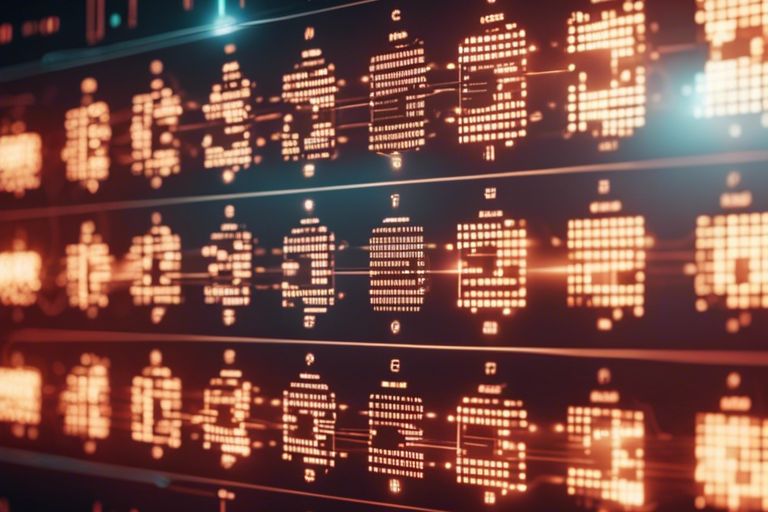The Evolution of Cyber Threats: The Role of AI in … AI, once a far-fetched concept, has transformed the landscape of cybersecurity measures. In digital defense, artificial intelligence has evolved to become a powerful tool in combating modern cyber threats, enhancing detection capabilities, and fortifying network security.

Key Takeaways:
- AI is Reinventing Cybersecurity: Artificial Intelligence is transforming cybersecurity measures by enabling faster threat detection, response, and analysis.
- Machine Learning Enhances Security: Machine learning algorithms are being utilized to identify patterns in data that signify potential cyber threats, enhancing overall security effectiveness.
- Automation is Key: Automation of routine security tasks through AI technologies allows cybersecurity professionals to focus on more strategic aspects of threat mitigation and prevention.

Early Beginnings
Before delving into the modern advancements in AI-driven cybersecurity measures, it is crucial to understand the early stages of AI integration in this field. Here are some chatGPT prompts related to this subject:
- What were some of the earliest use cases of AI in cybersecurity?
- How did AI technologies initially aid in threat detection and response?
- Can you elaborate on the evolution of AI applications in cybersecurity over the years?
- What role did early AI-powered systems play in enhancing cybersecurity protocols?
Rule-based Expert Systems
The rule-based expert systems were one of the first manifestations of AI in cybersecurity. These systems relied on predefined rules and logic to make decisions. Here are some chatGPT prompts related to this subsection:
- What are rule-based expert systems in the context of cybersecurity?
- How do rule-based systems differ from modern AI approaches in cybersecurity?
- Can you provide examples of rule-based expert systems used in early cybersecurity measures?
- What are the limitations of rule-based expert systems in dealing with complex cyber threats?
Machine Learning Emerges
The advent of machine learning brought a paradigm shift in cybersecurity. These systems could learn from data patterns and adapt their responses accordingly. Here are some chatGPT prompts related to this subsection:
- How did the emergence of machine learning revolutionize cybersecurity practices?
- What role does machine learning play in detecting and mitigating cyber threats?
- Can you explain the concept of anomaly detection in machine learning-based cybersecurity solutions?
- What are some popular machine learning algorithms used in cybersecurity applications?
For a more detailed overview, let’s probe deeper into the significance of machine learning in cybersecurity measures. Here are some chatGPT prompts related to this subsection:
- What are the key advantages of using machine learning in cybersecurity?
- How does machine learning enhance the accuracy and efficiency of threat detection?
- Can you elaborate on how machine learning models are trained to recognize cyber threats?
- What are the challenges associated with implementing machine learning in cybersecurity frameworks?
Systems integrating AI in the cybersecurity landscape have a rich history, from rule-based expert systems to the emergence of advanced machine learning algorithms. These early beginnings laid the foundation for the sophisticated AI-powered defenses we rely on today.

AI-powered Cybersecurity
Now, AI is transforming cybersecurity measures by providing advanced capabilities in anomaly detection, response, predictive analytics, and threat intelligence. This evolution is crucial in combating the ever-evolving landscape of cyber threats, offering enhanced protection and proactive defense mechanisms.
- Detect anomalous behavior in network traffic to identify potential threats.
- Analyze large datasets to pinpoint unusual patterns that may indicate malicious activities.
- Enhance incident response by automating threat detection and containment processes.
Anomaly Detection and Response
The rapid advancement of AI has enabled cybersecurity systems to detect and respond to anomalies in real-time, enhancing threat identification and response mechanisms.
- Identify patterns of attack based on historical data.
- Monitor user behavior to detect unauthorized access attempts.
- Analyze network traffic to detect anomalies indicative of a breach.
Predictive Analytics and Threat Intelligence
The integration of AI-driven predictive analytics and threat intelligence enables cybersecurity professionals to foresee potential risks and take proactive measures to mitigate them effectively.
- Utilize machine learning algorithms to predict future cyber threats.
- Enhance threat detection capabilities through AI-powered threat intelligence platforms.
- Analyze historical data to identify emerging cybersecurity trends and patterns.
Response:
It is crucial to leverage predictive analytics and threat intelligence to anticipate and prevent cyber threats effectively. By harnessing AI technologies, organizations can stay ahead of potential risks and protect their systems and data from sophisticated cyber attacks.
- Forecast cybersecurity trends based on historical data analysis.
- Enhance threat detection accuracy using machine learning algorithms.
- Implement proactive cybersecurity measures based on predictive insights.
It is imperative for organizations to adopt AI-powered cybersecurity measures to defend against the evolving threat landscape effectively. By integrating advanced technologies such as anomaly detection, predictive analytics, and threat intelligence, businesses can strengthen their security posture and safeguard sensitive data from potential breaches.
Current Advancements
For the latest advancements in AI for cybersecurity, we research into Deep Learning and Neural Networks. Here are some chatGPT prompts related to this section:
- How is deep learning revolutionizing cybersecurity measures?
- Discuss the role of neural networks in enhancing threat detection.
- Can you explain how AI-powered neural networks are improving anomaly detection in cybersecurity?
Deep Learning and Neural Networks
For ways in which AI is transforming cybersecurity, deep learning and neural networks play a pivotal role. Here are some chatGPT prompts that can shed more light on this topic:
- Explain the concept of deep learning and its application in cybersecurity.
- How do neural networks enhance the predictive capabilities of cybersecurity systems?
- Can you provide examples of how deep learning models are being used to detect and prevent cyber threats?
Natural Language Processing and AI-driven Incident Response
Any discussion on AI-driven advancements in cybersecurity is incomplete without highlighting the role of Natural Language Processing (NLP) in incident response. Here are some chatGPT prompts related to this area:
- How does Natural Language Processing contribute to improving incident response in cybersecurity?
- Discuss the benefits of leveraging AI for real-time incident detection and response using NLP.
- Can you elaborate on how AI-driven NLP is streamlining threat intelligence analysis and response?
Natural Language Processing and AI-driven Incident Response play a critical role in enhancing the efficiency and effectiveness of cybersecurity measures. By enabling machines to understand and respond to human language, NLP empowers automated systems to swiftly and accurately identify and mitigate security threats. Leveraging AI-driven technologies for incident response not only improves response times but also aids in reducing the burden on cybersecurity teams, allowing them to focus on more strategic tasks.
In the context of Deep Learning and Neural Networks, these technologies have significantly bolstered the capabilities of cybersecurity systems by refining threat detection mechanisms and enhancing anomaly identification. Deep learning models, powered by neural networks, have the capacity to learn complex patterns and behaviors, enabling them to proactively identify and neutralize potential threats before they escalate. This sophisticated approach marks a pivotal advancement in the cybersecurity landscape, equipping organizations with robust defense mechanisms against evolving cyber threats.
Future Prospects
Not yet fully realized, the future prospects of AI in cybersecurity are promising. Here are some potential directions for the integration of AI technologies to further enhance cybersecurity measures:
- How can AI help in preemptive threat detection?
- What are the implications of AI in developing autonomous security systems?
- Can AI be utilized to predict and prevent cyber attacks?
- How will human-AI collaboration shape the future of cybersecurity?
Autonomous Security Systems
The integration of autonomous security systems powered by AI presents a future where cybersecurity can respond to threats in real-time without human intervention. By leveraging machine learning algorithms and continuous data analysis, these systems can adapt and evolve to counter new and emerging cyber threats effectively.
- How can AI algorithms be used to create self-learning security systems?
- What are the challenges in developing autonomous cybersecurity systems?
- Can autonomous security systems completely replace human intervention in cybersecurity?
- What role will AI play in enhancing incident response in autonomous security systems?
Human-AI Collaboration and Augmentation
An important aspect of the future of cybersecurity lies in the collaboration and augmentation of human analysts with AI technologies. By combining human expertise with AI’s processing power, organizations can maximize their cybersecurity efforts and proactively defend against sophisticated cyber threats.
- How can AI tools enhance the capabilities of human cybersecurity analysts?
- What are the ethical considerations of integrating AI in human-centric cybersecurity workflows?
- Will human-AI collaboration redefine the roles and responsibilities of cybersecurity professionals?
- In what ways can AI augment human decision-making processes in cybersecurity?
The advancements in AI technologies offer unprecedented opportunities to revolutionize cybersecurity practices. By embracing these innovations and fostering collaboration between human expertise and AI intelligence, organizations can stay ahead in the ever-evolving landscape of cyber threats.
Summing up
To wrap up, the evolution of AI in cybersecurity measures has shown great promise in enhancing the defense against cyber threats. From basic automation to advanced machine learning algorithms, AI continues to evolve and adapt to the ever-changing landscape of cybersecurity. As technology advances, so too must our approach to protecting sensitive data and networks, and AI is proving to be a valuable tool in this ongoing battle.
FAQ
Q: What is the role of AI in cybersecurity measures?
A: AI plays a crucial role in cybersecurity measures by enhancing threat detection, response times, and overall system security.
Q: How has AI evolved in the field of cybersecurity?
A: AI has evolved in cybersecurity from basic rule-based systems to sophisticated machine learning algorithms that can detect and respond to cyber threats in real-time.
Q: What are some examples of AI applications in cybersecurity?
A: Some examples of AI applications in cybersecurity include anomaly detection, malware analysis, user behavior analytics, and automated incident response.

Recent Comments